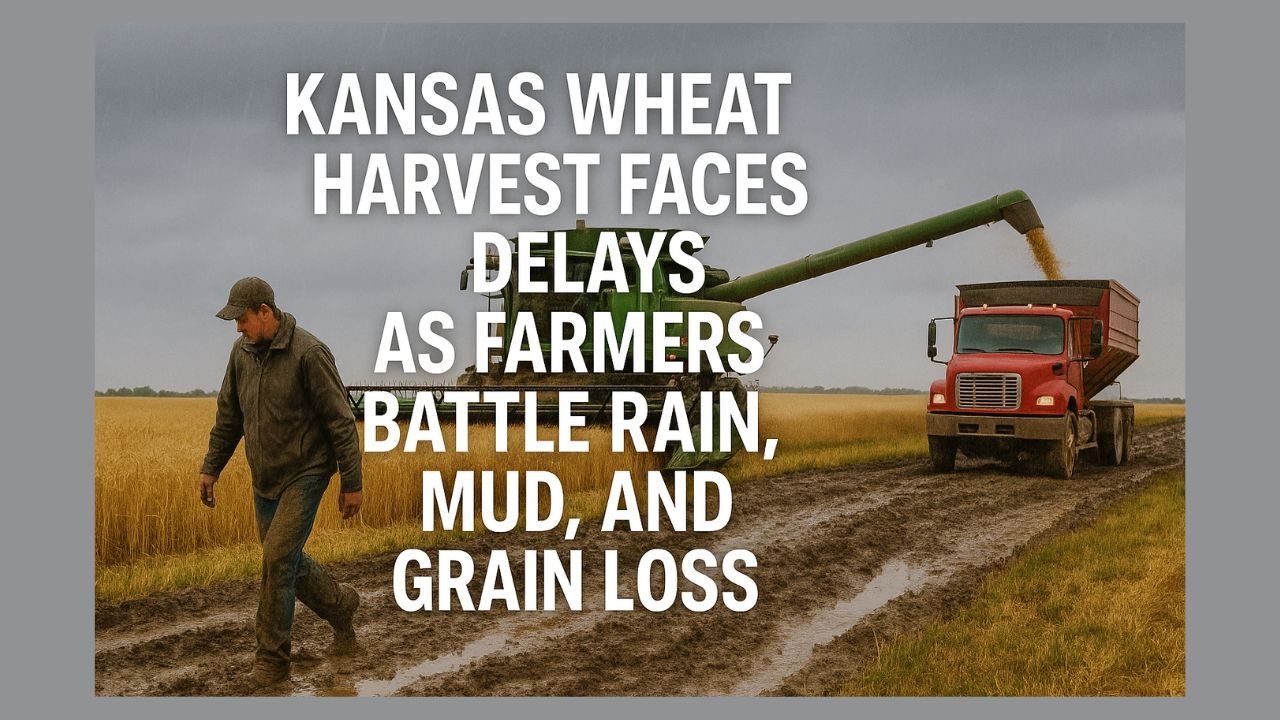Frequent rounds of rainstorms across Kansas have significantly delayed wheat harvests, leaving many farmers scrambling to get into the fields during brief dry spells.
While a recent dry weekend provided some much-needed relief, farmers remain under pressure to cut as much wheat as possible before more rain returns.
Grain Shattering Threatens Crop Yields
Farmers are reporting a concerning issue known as “shattering”—when the grain falls from the wheat heads prematurely. Although wind and hail can also contribute, this year’s culprit is largely excess moisture.
“The quality of the straw and the heads has deteriorated because of the recent rains,” said Alvin Neville, a wheat farmer in Colwich. “The heads are starting to break off and shatter due to too much moisture.”
Neville estimates that one of his fields could lose five to seven bushels per acre due to this issue, significantly impacting overall yields.
Extension Experts Confirm Harvest Setbacks
Jeff Seiler, an extension agent with Kansas State University, confirmed that the recent rain has caused considerable harvest delays across the region.
“Friday was the first time I saw combines rolling in our area,” Seiler noted. “Even though it was still muddy, farmers took advantage of the dry weather to push forward with harvest.”
He added that while many combines were running over the weekend, any future rainfall could once again stall progress.
Moisture Damaging Wheat Quality
Seiler explained how ongoing rain negatively affects wheat condition:
“The more it rains, the more the grain swells and shrivels. Stalks break down, causing wheat to lay over. It slows down the harvest and reduces grain quality.”
This added moisture not only weakens the structural integrity of the wheat but also complicates machine harvesting, especially in already muddy fields.
Neville Hopes for a Clear Forecast
With only half of his crop harvested, Neville is closely monitoring the weather, hoping for more dry days ahead. He believes it could take a couple of days before his fields are dry enough to resume cutting.
“There’s still a lot of wheat standing, but we just can’t get to it yet. It’s a gamble every year—choosing the right variety without knowing how the weather will play out,” Neville said.
Kansas farmers are racing against time and weather to salvage their wheat crops. From muddy fields to shattered grain and weakened stalks, the 2025 harvest season is proving to be one of the most challenging in recent memory.
As more storms loom, growers are relying on every dry hour to preserve as much of their yield as possible.




